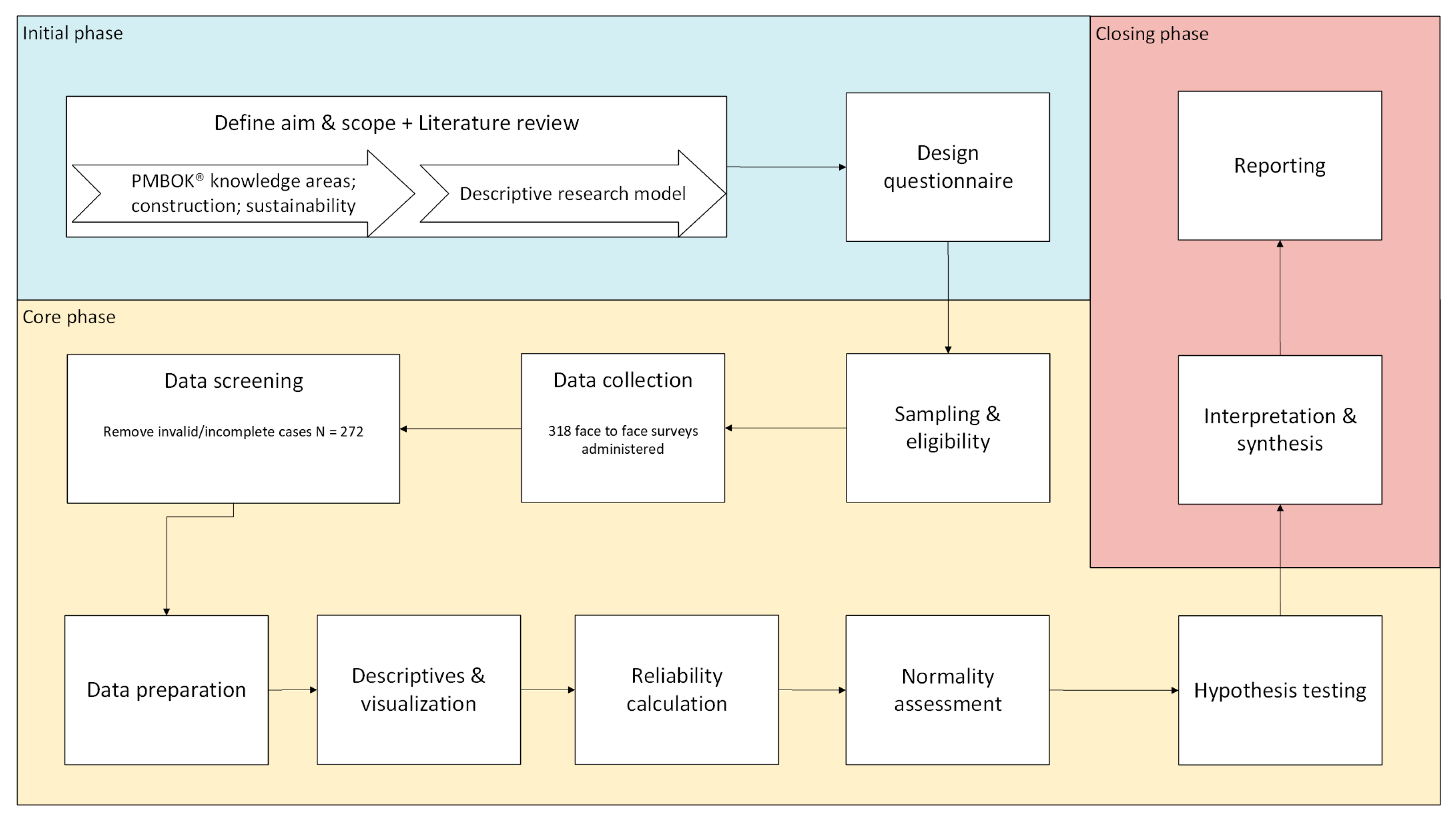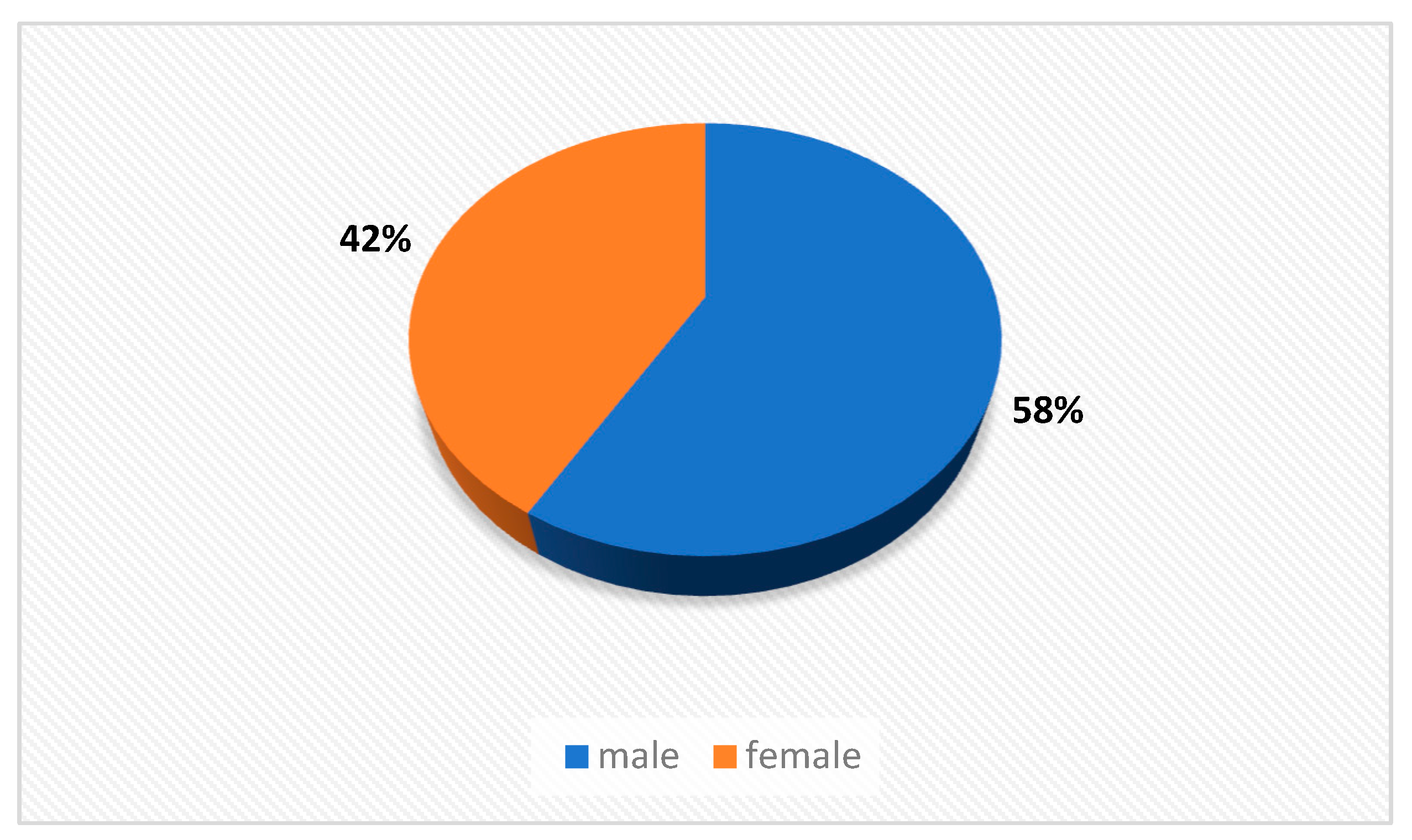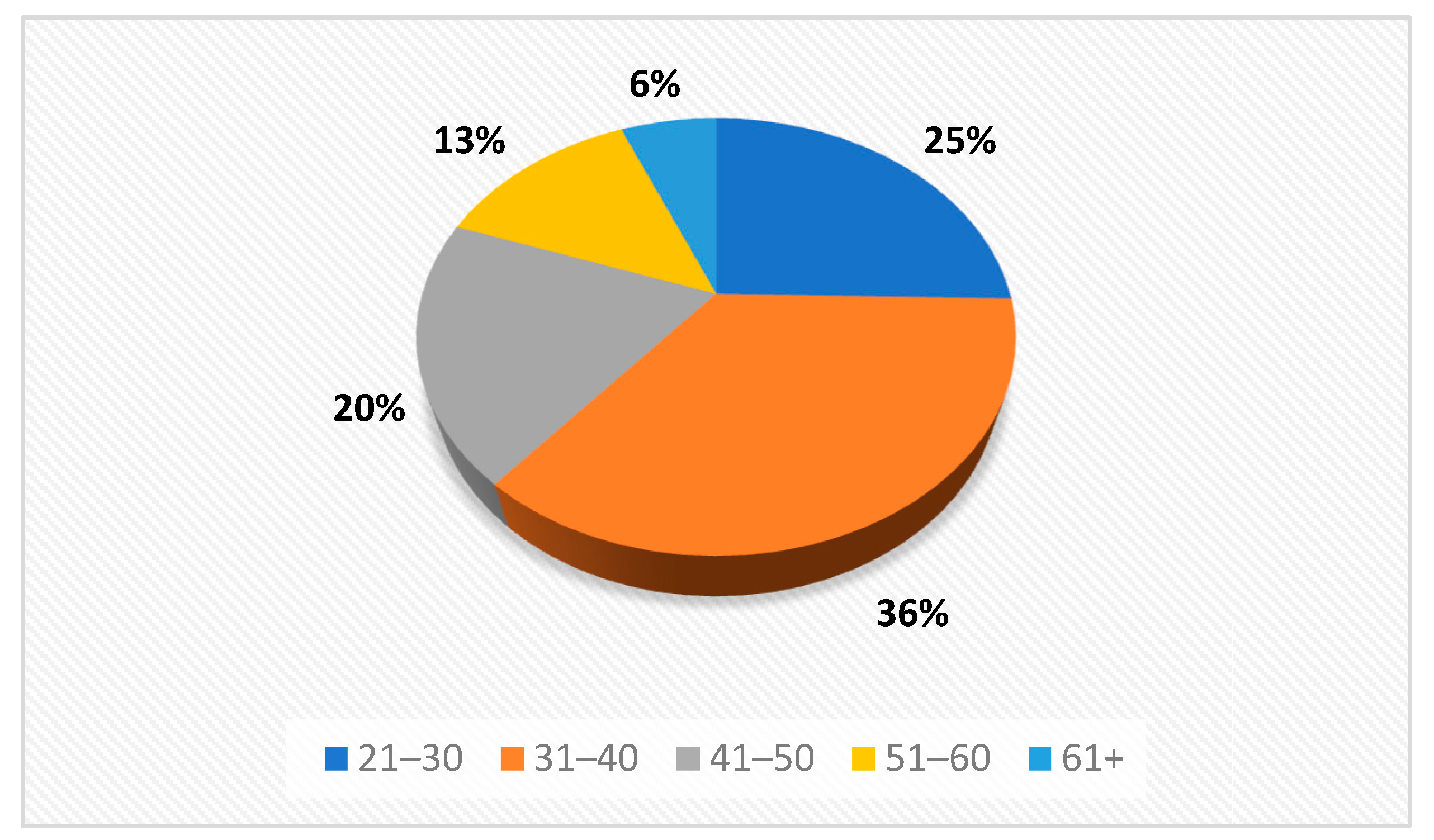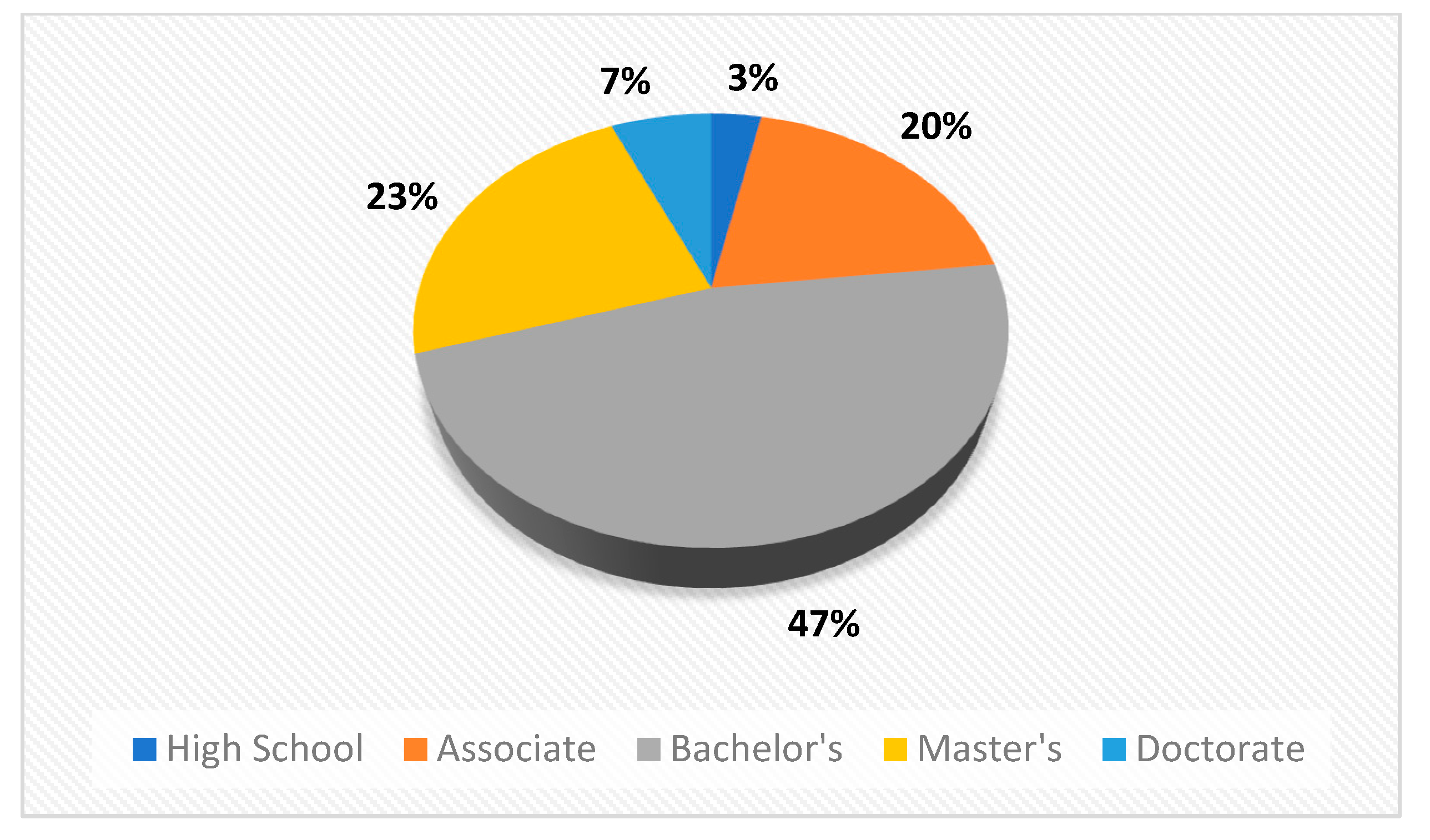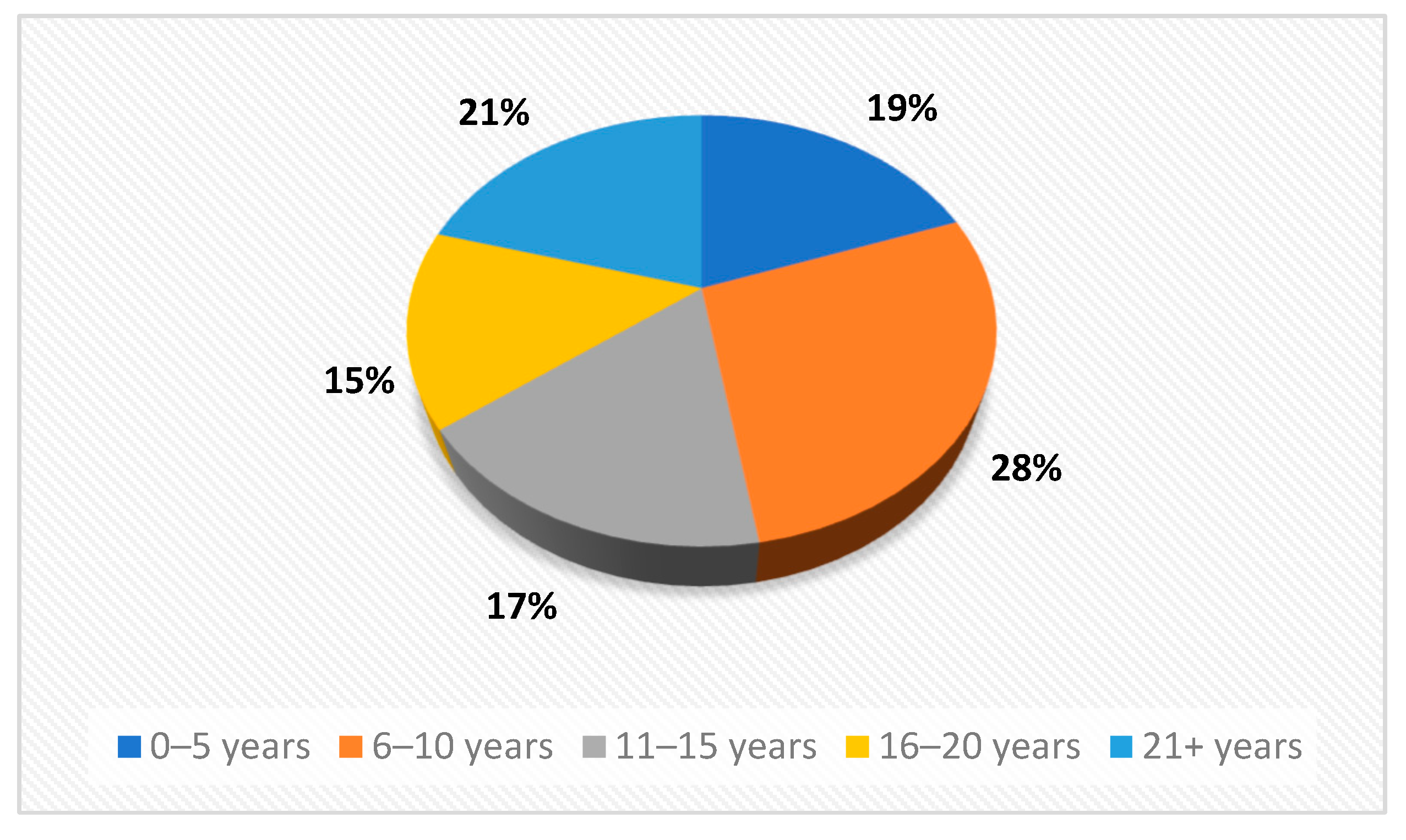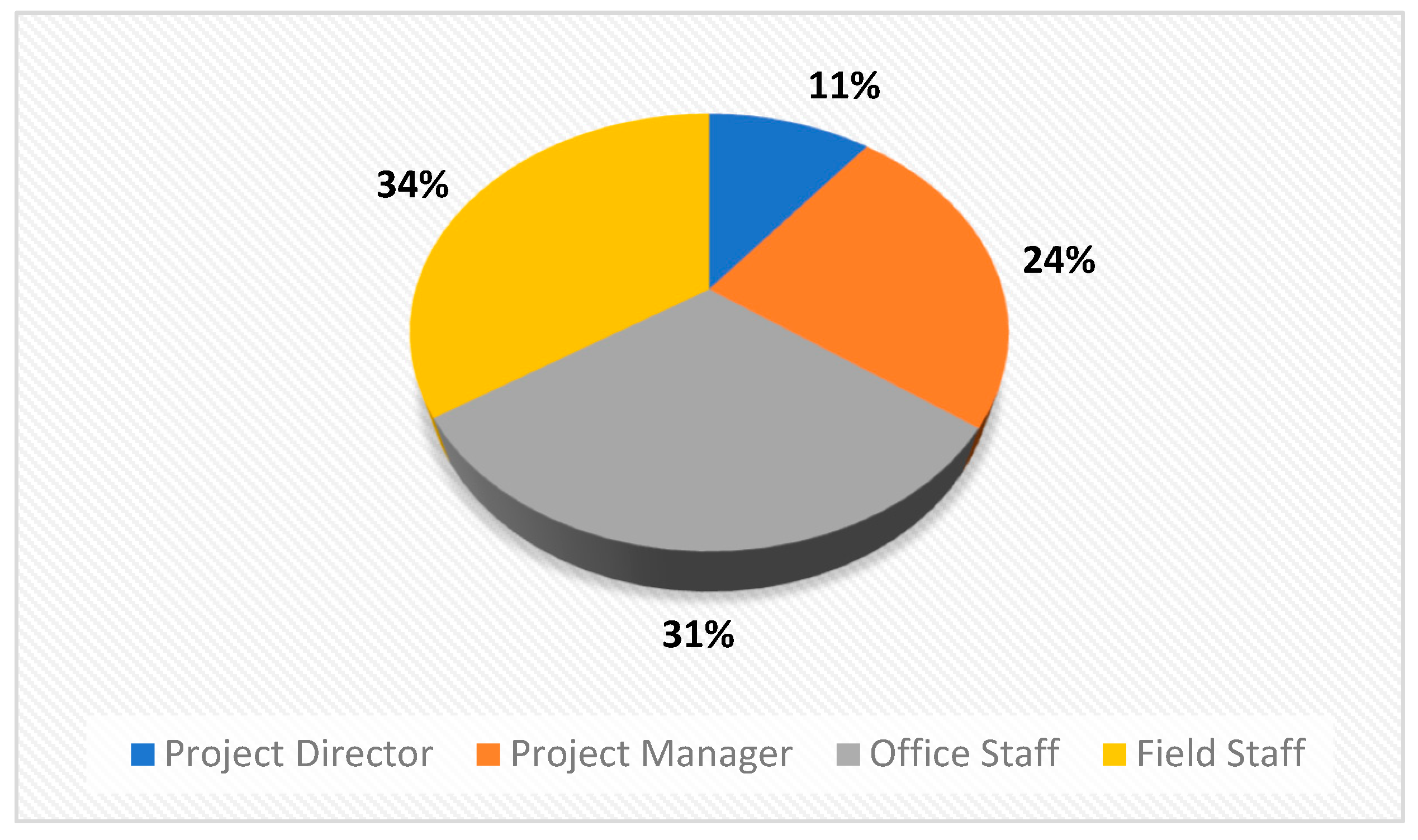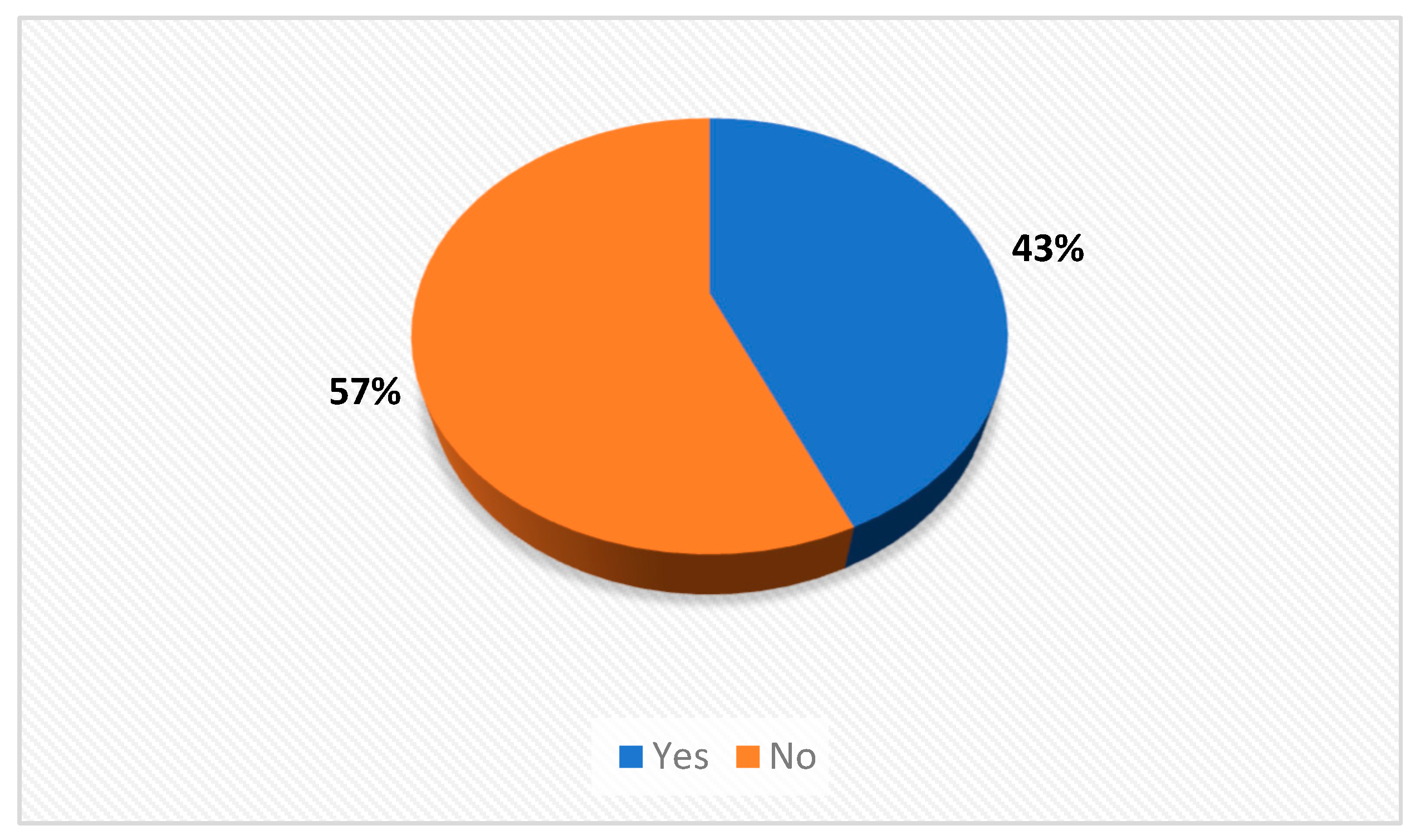1. Introduction
The construction sector remains a key industry, continuously evolving in response to societal needs and technological advancements [
1]. It is a well-known fact that it contributes significantly to the economy with its share in national income, its impact on the development of many different sectors, and its high employment capacity.
The construction sector is of strategic importance today not only because of its contribution to economic growth and high employment potential, but also because of its environmental and social impacts. Global challenges such as population growth, the rapid depletion of natural resources, and increasing environmental pollution have highlighted the need to reassess construction projects from a sustainability perspective [
2,
3].
The concept of sustainability in the construction sector is not limited to the management of environmental impacts but requires a holistic approach that also encompasses the principles of economic efficiency, social responsibility, and technical suitability. In this context, the integration of sustainability principles into construction projects is made possible through an effective project management approach.
Project management provides a systematic approach that enables construction projects to be planned, executed, and monitored in accordance with specific objectives and constraints. In the classical sense, project management involves the management of fundamental elements such as time, cost, scope, and quality. However, today, sustainability has been integrated into these practices, resulting in a significant expansion of the project management process.
In project management, sustainability is not considered an additional component but rather a fundamental principle that must be integrated into the entire project management process. In this context, the application of the project management knowledge areas defined by the Project Management Institute (PMI) in construction projects is of critical importance for the effective achievement of sustainability goals.
1.1. Use of Project Management Knowledge Areas in Construction Sector
Project management is defined as the art and science of efficiently using experience, knowledge, skills, tools, and techniques to meet stakeholder’s expectations [
4]. A Guide to the Project Management Body of Knowledge, also known as PMBOK
® Guide published by PMI in 2017 as sixth edition [
5] summarizes the elements necessary for the process to be successful under ten headings as “Project Management Knowledge Areas”. These are: integration management, scope management, schedule management (formerly: time management), cost management, quality management, resource management (formerly: human resources management), communications management, risk management, procurement management, and stakeholder management [
5,
6,
7]. Each knowledge area can be explained in turn, with consideration given to its contribution to sustainability in the construction sector as follows.
1.1.1. Project Integration Management
Integration management aims to ensure that different areas of information work in harmony in construction projects, thereby enabling project objectives to be achieved effectively. The holistic management of elements such as design, budget, scheduling, workforce, and procurement not only supports project success but also sustainability goals [
8].
1.1.2. Project Scope Management
Scope management is a systematic process consisting of planning, definition, work breakdown structure creation, verification, and control stages that ensures activities appropriate to the project’s objectives are identified and included in the process [
9]. In construction projects, clearly and accurately defining the scope contributes directly to sustainability by preventing waste of resources, reducing unnecessary material use, and minimizing environmental impacts.
1.1.3. Project Schedule Management
Completing projects in accordance with specified time, cost, and quality targets is one of the fundamental challenges of project management. The time management process includes defining activities, sequencing them, estimating resources, and analyzing time frames. Time schedules created using techniques such as Gantt charts, Critical Path Method (CPM), and PERT ensure the effective use of resources and contribute to the optimization of project duration. Nowadays, this challenge can be achieved with sophisticated modeling environments based on the Building Information Modeling [
10]. In this regard, the effective implementation of time management plays a critical role in achieving economic efficiency and environmental sustainability goals in construction projects.
1.1.4. Project Cost Management
The primary objective of companies in the construction industry is to complete projects cost-effectively within the specified budget [
11]. Cost is the monetary value of the resources required for project [
12]. Project cost management encompasses planning, estimation, budgeting, and control processes and optimizes resource utilization. Cost management supports the sustainable development of construction projects by promoting resource efficiency and preventing waste.
1.1.5. Project Quality Management
Quality management is a fundamental factor in meeting customer expectations and successfully completing projects in the construction industry [
13]. Increasing competition and industry dynamics require companies to develop quality policies that comply with national and international standards. Errors and changes in projects cause time and cost losses, while lowering quality standards negatively affects the overall success of the project. Therefore, effective quality management increases efficiency and minimizes risks by ensuring control of processes.
1.1.6. Project Resource Management
It includes the processes to identify, acquire, and manage all necessary elements needed for the successful completion of the project. One of the most important types of resources is people. Human resources management encompasses the selection, management, and organization of individuals who will be involved in the project process, ensuring harmony and cooperation among employees. Construction projects are complex structures that require the interaction of interdisciplinary teams with different knowledge and skills [
14]. Human resource management contributes to social sustainability by supporting employee health, safety, and professional development, while increased motivation and productivity strengthen economic sustainability.
1.1.7. Project Communications Management
Communication management in construction projects is a fundamental process that involves collecting, analyzing, and effectively communicating the information needed during the project process [
15]. The multidisciplinary nature of the project and the large number of participants make communication management a complex and strategic activity. This process also indirectly contributes to sustainable project practices by promoting the efficient use of resources and preventing unnecessary duplication.
1.1.8. Project Risk Management
All events and circumstances that could negatively affect the success of the project are defined as risks [
16]. Construction projects involve complex and difficult-to-control activities from design to delivery; during this process, various risks arise from design, construction, environmental, and natural disasters. Effective risk management supports economic sustainability by ensuring the efficient use of resources and facilitates the control of environmental and social impacts, thereby contributing significantly to the sustainability of construction projects.
1.1.9. Project Procurement Management
Procurement management is a strategic process that plans the type, method, and timing of delivering goods and services required for a project. Supply chain management, on the other hand, aims to effectively coordinate the flow of products, information, and finances from the manufacturer to the end user [
17]. Procurement management not only provides economic advantages but also contributes to environmental sustainability by promoting the use of local resources, reducing waste, and selecting energy-efficient materials.
1.1.10. Stakeholder Management
Individuals and institutions that are directly involved in the project, use its results, or are affected by its results are defined as stakeholders; external factors that may have an indirect impact on the project are also included in this scope. The participation of stakeholders from different disciplines, with different goals and ways of working, creates a complexity that must be managed [
18]. Therefore, effective stakeholder management is critical in terms of clarifying roles and responsibilities, ensuring that project objectives are understood by participants, and facilitating collaboration. Additionally, effectively managing communication and participation among stakeholders facilitates the adoption and implementation of environmental, social, and economic sustainability principles throughout the project, thereby contributing to long-term value creation.
1.2. Research Objectives, Gap Statement, and Contributions
This study aims to empirically evaluate how the use of PMBOK® knowledge areas in construction projects supports sustainability integration. Through a survey of selected practitioners, the relationship between participants’ educational level, project role, and prior project management training and their perceptions of knowledge area usage was tested, along with differences in company and project profiles in practical application. In doing so, the study addresses three key gaps: (i) the scarcity of large-sample, role-differentiated evidence from the construction sector; (ii) limited quantitative testing of the link between PMBOK® knowledge areas and sustainability implementation; and (iii) the lack of comparative insight into organizational and project-type contexts that enable or hinder systematic use of these areas. The findings are intended to inform managers, investors, and policy-makers by identifying leverage points for training and capability building and by providing an evidence-based baseline for benchmarking and improving sustainable project-management practice.
This study aligns with civil infrastructure systems by linking the organizational use of knowledge areas to enablers of life-cycle sustainability assessment and risk-inform ed decision making in civil-infrastructure projects. It contributes empirical evidence on how education, roles, training, and company context shape systematic application of integration, schedule/time, quality, risk and procurement practices, thereby supporting sustainability assessment workflows and risk analysis across diverse construction project types.
Accordingly, to operationalize these aims and address the identified gaps, the following research questions were articulated:
RQ1: Do practitioners’ education level, project role, project profile, and prior project-management training significantly differentiate the perceived use of PMBOK® project-management knowledge areas?
RQ2: Do company profiles and project profiles significantly differentiate the application level of project-management steps?
RQ3: In what ways does the systematic application of PMBOK® knowledge areas correspond with practices of sustainability integration and risk-informed decision making in civil-infrastructure projects?
The next section outlines the research design, and analytical procedures used to respond to these questions.
4. Discussion
This study examined how PMBOK® project management knowledge areas are used in construction practice and which contextual factors shape their adoption, with a particular focus on implications for sustainability integration. The original contribution of this study is not limited to merely applying known statistical methods but also involves a detailed examination of the application of PMBOK knowledge areas in construction projects in terms of sustainability, as well as revealing differences in application between different companies and project types. This approach addresses gaps in the existing literature and brings together practice and theory.
Firstly, generally, formal education is strongly associated with the systematic use of project management knowledge areas because it provides structured, comprehensive, and accredited learning experiences that cover all essential aspects of project management [
38]. The significant differences by education level indicate that formal education is strongly associated with more systematic use of knowledge areas also in construction sector. This aligns with prior observations that project management education deepens analytical and integrative skills required for scope definition, schedule/time planning, quality assurance, and risk management. From a sustainability standpoint, higher education may also enhance the ability to incorporate environmental and social criteria into planning and control (e.g., life-cycle thinking in scope and procurement, risk registers covering environmental and OHS risks), which helps explain the higher perceived use among bachelor’s, master’s, and doctoral graduates. Furthermore, the findings suggest that formal education can encourage proactive thinking about sustainability, enabling practitioners to anticipate environmental and social impacts before they arise.
Secondly, the role type within a project influences the systematic use of project management knowledge areas through the integration of diverse expertise, interdisciplinary knowledge, effective knowledge management, alignment with project characteristics, and supportive leadership [
39]. The finding that project directors and managers report greater use than office and field staff confirms a top-heavy adoption pattern also in construction sector. While strategic functions (integration, schedule/time, risk, and quality) are naturally concentrated at managerial levels, the comparatively lower on-site uptake suggests a translation gap between plan and execution. For sustainability, this gap is critical: many sustainability outcomes—waste prevention, energy efficiency during construction, safe working conditions—are realized at the site interface. Similarly, Abuhussain et al. demonstrate that a BIM and machine learning-based model can directly contribute to energy efficiency and environmental impact reduction at the field level through PMBOK knowledge areas [
40]. Strengthening field-level routines (e.g., checklists for sustainable procurement and quality inspections, short interval control that includes environmental and safety KPIs) can improve the fidelity with which sustainability objectives embedded in plans are carried through to daily practice.
In addition, the systematic use of project management knowledge areas is influenced by the complexity and size of the project, organizational support, effective knowledge transfer, and the relational context within the project team. These factors collectively ensure that project management practices are comprehensive and well-integrated [
41]. The research revealed that higher use of knowledge areas in public and industrial projects likely reflects tighter regulatory scrutiny, clearer documentation requirements, and more formalized governance (e.g., tender specifications, independent supervision, mandatory audits). These mechanisms create incentives for systematic scope, quality, risk, and procurement management—processes that also enable sustainability assurance and traceability. Conversely, infrastructure and transportation projects show lower perceived use, which may stem from dispersed sites, longer horizons, and multi-agency coordination challenges. Targeted interventions—owner-mandated risk and sustainability registers, harmonized document control, and digital collaboration protocols—can raise consistency in these contexts. This situation demonstrates that creating customized digital tools and sustainability dashboards can support coordination and monitoring in large-scale and dispersed projects.
Project management training equips individuals with the necessary knowledge, skills, and frameworks to systematically manage and apply various project management practices, thereby enhancing project success and organizational learning [
42]. The positive effect of project-management training corroborates the idea that structured exposure to standards increases not only awareness but also applied competence. The higher mean ranks among trained participants in areas like scope, integration, and procurement are consequential for sustainability: precise scope definition reduces rework and waste; integration ensures sustainability criteria flow down into schedule/time, quality, and risk processes; and procurement can operationalize sustainability through specifications (e.g., recycled content, EPDs) and contractor selection criteria.
The application of project management methodologies varies significantly across different company profiles. For instance, while some companies may adopt their own management methods, others might integrate methodologies to complement their practices. This diversity in methodology adoption reflects the varying needs and operational contexts of different company profiles [
43]. In construction management, the investor exhibits the highest application levels, while contractor/subcontractor groups lag. Owners and investors typically set requirements, control gate reviews, and demand evidence of conformance (plans, registers, audits). Such governance naturally promotes consistent application of PMBOK
® areas and, by extension, the embedding of sustainability and risk controls. Contractors’ lower scores highlight a need to translate owner requirements into practical, lean on-site routines and to resource middle management with tools that make sustainability “the easy path” (e.g., standardized submittal templates for sustainability data, digital checklists, short training modules). Encouraging information sharing meetings among stakeholders can increase understanding of sustainability measures and their practical implementation. This finding confirms that strengthening social sustainability practices, particularly through stakeholder participation and knowledge sharing processes, can improve sustainability performance in project management, as pointed out by Bashir et al. [
44].
Finally, the use of similar application levels in project management across different project profiles is driven by the universal approach to project management, the adoption of standardized models, the generalizability of practices, and the structured frameworks provided by maturity models [
45]. The absence of significant differences in the application level of steps by project profile suggests that, despite variation in perceived use, many organizations apply the stepwise mechanics of project management similarly across residential, public, industrial, infrastructure, and transportation projects. This resembles a sectoral baseline or institutionalization of core practices (planning, monitoring, control). For sustainability assessment and risk analysis, this is encouraging: standardized steps provide a stable scaffold into which life-cycle indicators (e.g., materials intensity, waste, energy, emissions) and risk treatments (e.g., environmental, schedule, and safety risks) can be systematically embedded. However, uniform steps should still be parameterized to context—e.g., infrastructure projects may require stronger emphasis on stakeholder and environmental risk due to spatial dispersion and long asset lives.
Concluding the results, the study provides role-differentiated evidence that connects human capital (education/training) and organizational positioning (role, company type) with the operational use of PMBOK® knowledge areas in construction. Then, it distinguishes perceptions of use from the stepwise application level, showing that sectoral standardization can coexist with heterogeneity in perceived depth. Additionally, it frames these determinants as enablers for sustainability assessment and risk-informed decision making across civil-infrastructure contexts. In general, the study suggests that targeted interventions such as specially designed training programs, digital monitoring tools, and information sharing among stakeholders can further increase the adoption of sustainability practices in construction projects.
However, the study is not free of some limitations. The data are self-reported and cross-sectional, which may introduce perception and common-method biases and preclude causal inference. The sample is drawn from Türkiye; while informative, generalizability to other regulatory and market contexts should be tested. The study measures perceived use and application level rather than objective project outcomes (cost/schedule/sustainability performance), and it does not model potential mediators such as firm size, contract type, or digital maturity (e.g., BIM use). Finally, the non-normal distribution of the perceptions scale suggests heterogeneity (possibly ceiling effects in some items), which future measurement work could refine.
For future research plans, three tracks appear most promising. (1) Outcome linkage: combine survey data with objective performance and sustainability metrics (e.g., waste diversion, embodied carbon, safety rates) to test whether higher knowledge-area use predicts better outcomes. (2) Comparative and longitudinal designs: replicate across countries and track organizations over time to examine how training and governance reforms shift adoption. (3) Mechanism testing: evaluate interventions—owner-mandated sustainability clauses in procurement, field-level training packages, digital workflows tying submittals to sustainability criteria—and estimate their effects on both adoption and outcomes. Multi-level models (individual–project–firm) and integration with BIM/LCA datasets could yield especially policy-relevant insights.
In sum, the evidence indicates that education, role, training, and ownership context are pivotal levers for deepening the practical use of PMBOK® knowledge areas. Harnessing these levers can accelerate the mainstreaming of sustainability assessment and risk analysis within the everyday management of civil-infrastructure projects.
